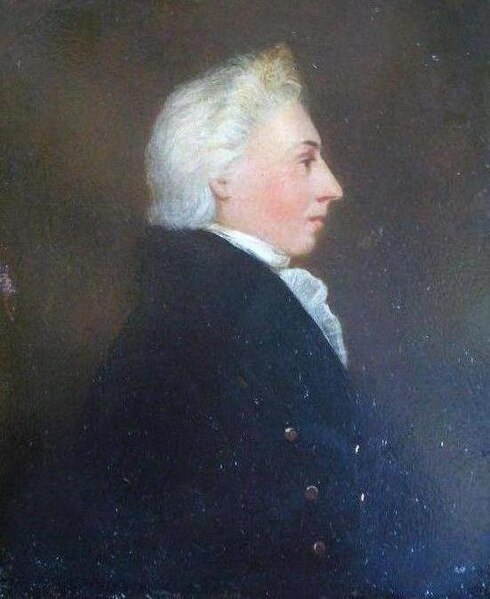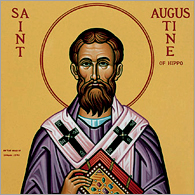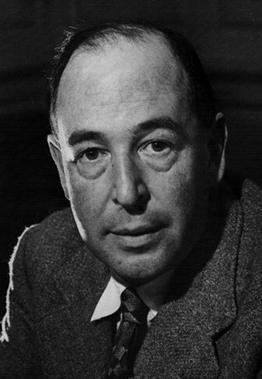There are innumerable ways God can accomplish the task at hand if and when the normal laws which govern the universe are set aside to make room for God’s divine ingenuity (Robert Sungenis, Galileo Was Wrong).
 Bob Sungenis has written what he and his followers apparently consider a veritable coup de grace to my article, “Geocentrism and the Pitfalls of Over-literal Interpretation” (unless otherwise indicated, all citations below will be from his response, entitled “Debunking David Palm, Phase 1: Joshua 10:10‐14”.) He began his article by spending two pages trying to poison the well for his readers with mischaracterizations of my views. Then, skipping over the first 4/5 of my article without comment, he focused his somewhat more substantive critique solely on the matter of Joshua 10.
Bob Sungenis has written what he and his followers apparently consider a veritable coup de grace to my article, “Geocentrism and the Pitfalls of Over-literal Interpretation” (unless otherwise indicated, all citations below will be from his response, entitled “Debunking David Palm, Phase 1: Joshua 10:10‐14”.) He began his article by spending two pages trying to poison the well for his readers with mischaracterizations of my views. Then, skipping over the first 4/5 of my article without comment, he focused his somewhat more substantive critique solely on the matter of Joshua 10.
For those both supportive and skeptical of Sungenis, by using his own argument I’ll demonstrate that neither the text of Joshua 10 nor the Fathers who reference it can be pressed into service to “prove” geocentrism. But first, let me clear up some misinformation and misunderstanding.
“Liberal, liberal, liberal!” (Sen. Bob Dole, debating Bill Clinton)
Throughout his response to me, but particularly during the first two pages, Sungenis works to paint a portrait of me as a consummate liberal– presumably in order create reflexive fear and distrust in the minds of his customers and followers. Were one to simply accept Sungenis’s characterization, I’m a liberal the likes of demythologizer Rudoph Bultmann or perhaps John Dominic Crossan, who denies miracles, completely sides with Galileo against the Church, and worships at the altar of “modern science without question”, as he put it.
For the record, I think Galileo was wrong about all kinds of things. I have no a priori attachment to any modern cosmological theory, while at the same time personally holding that strict geocentrism is scientifically untenable. And I have always firmly upheld the full inerrancy of sacred Scripture, as taught by Popes Leo XIII, Benedict XV, Pius X, Pius XI, Pius XII, Dei Verbum (as interpreted in line with Tradition), and most recently the Congregation for the Doctrine of the Faith in Professio Fidei. In fact, Sungenis found my work and views on biblical inerrancy so trustworthy that he asked me at one time to contribute a chapter to a book and speak at a conference he was planning on that topic. Nothing in my views on inerrancy has changed since then. The following is just one example of how Sungenis tried to create a false impression to the contrary:
[Palm] makes the conclusion that the whole passage is Hebrew poetry, which he then uses as a basis to conclude that none of Joshua 10 has any reference to an actual historical event in which the sun and moon stopped in the sky for a whole day.
That is not what I wrote and it’s not what I believe. In fact, in the very article Sungenis is criticizing, I repeatedly stated that I hold what is described in Joshua 10 to be an actual, miraculous event that occurred in history. I spoke of: “the miracle of the sun and moon in Joshua 10:13”, “the miracle of Joshua 10”, and called the passage, “the description of a genuine miracle”. As such, I am neither questioning the historical reality of the event recorded in Joshua 10, nor the miraculous nature of it.
Rather, what I stated repeatedly is that Scripture, especially in its poetic passages, often uses phenomenological language (that is, the language of how things appear to us human beings from our perspective) and that:
no objective, physical, scientific details can be gleaned from a purely phenomenological text.
it’s dubious to try and glean scientific details of the motion of cosmological bodies from this passage . . .
the Holy Spirit did not intend to teach anything about the “essential nature of the things of the physical universe” through the use of such phenomenological language . . .
the geocentrist attempt to mine the Scriptures for scientific support [is] both unreasonable and futile [emphasis mine.]
I stand by those statements. Joshua 10 describes matters as they sensibly appeared, using terms that were commonly used at the time so that men could understand them. It does not teach us anything about the essential nature of the physical universe.
Do Miracles Reveal Scientific Truths?
Exactly the same thing can be said about miracles. Sungenis confuses acknowledging the historical reality of a miraculous event with appealing to an alleged objective scientific explanation behind it. A miracle is, by definition, an exception to the normal laws of nature. It is a supernatural occurrence. The Catholic Encyclopedia notes that this relationship to natural laws can differ—miracles can be “above nature”, “contrary to nature”, or “outside nature” (s.v. “Miracle”.) From this, it follows that it is highly dubious, if not impossible, to derive specific, scientific information about the essential nature of the physical order from the description of a miracle.
 But Sungenis insists that for any miracle we “must” actually identify the specific natural phenomenon that the miracle “set aside”. He claims, “Mr. Palm has trapped himself. By admitting ‘it’s a genuine miracle,’ Mr. Palm must then specify the natural phenomenon the miracle of Joshua set aside” (my emphasis.)
But Sungenis insists that for any miracle we “must” actually identify the specific natural phenomenon that the miracle “set aside”. He claims, “Mr. Palm has trapped himself. By admitting ‘it’s a genuine miracle,’ Mr. Palm must then specify the natural phenomenon the miracle of Joshua set aside” (my emphasis.)
He attempts to illustrate this with a couple of examples. But these examples actually only demonstrate his presumptuous assumption that God’s creative imagination must be as limited as his own. For example, he confidently asserts, “when Jesus walked on water, what natural phenomenon did he set aside? Answer: gravity.” But even a moment’s thought on the matter shows that, if one really insists on this misguided quest to identify a particular physical mechanism that a given miracle “set aside”, there are any number of ways that this miracle could have come about. Perhaps the density of the water increased. Perhaps the density of our Lord’s body decreased. Perhaps the surface tension of the water was altered. I’m not claiming that any of these explanations are actually true; in fact I think it’s silly to talk this way. I’m simply highlighting that a miracle is, by definition, outside of nature and that the description of one gives us no basis on which to insist on particular natural causes. As the Catholic Encyclopedia states, a miracle need not have any specific “physical explanation” at all – it may be entirely “above” or “outside” nature. God is not bound to do things in any particular way. In fact, God could use means that are so beyond us we can’t even imagine them. More on that below.
Sungenis also incorrectly insists that we not only can, but must explain the physical cause “behind” miracles, an even more extravagant claim:
Yes, Mr. Palm can claim that at least some of this language (“setting”) is “phenomenal,” but it does nothing for his argument. It only traps him further, since now he must show what is behind the phenomenal language. In other words, if the stopping of the sun is “phenomenal” language, what is the actual reality that produces the “phenomenal” event? (emphasis mine.)
And,
If there is a physical explanation for why the sun appears to “set,” there must also be a physical reason for why the sun stopped in the sky in Joshua 10:13 (emphasis mine.)
And he more specifically insists that in the instance of Joshua 10 those physical causes can be narrowed to just two:
There are two possible answers: (1) the sun is moving around the Earth, or (2) the Earth stopping [sic] in its rotation. Or is there some other physical phenomenon Mr. Palm believes occurred but which he is not revealing? (my emphasis.)
The problem?
In his book Galileo Was Wrong, Sungenis himself made a third proposal that provides a neat and simple solution to the supposed dilemma. Why he didn’t mention it in his latest essay is a mystery. Sungenis states that, “perhaps . . . both the sun and moon ceased their motion as the universe at large stopped revolving altogether” (GWW3, 9th ed., p. 43; emphasis mine.) Remember, Sungenis insists that a non-geocentrist would still need to provide, “the natural phenomenon the miracle of Joshua set aside.” But if the miracle was that the entire universe stopped moving, including the sun and the moon (as he himself proposed in Galileo Was Wrong), then that explanation works just as well in a heliocentric solar system as it does in a geocentric one. If the entire universe stopped moving, then in either system one could literally say that the sun and the moon ceased moving as well.
Problem resolved, thanks to Galileo Was Wrong.
 Indeed, Fr. Haydock’s commentary, a source that Sungenis has praised in the past and I think would escape his charge of being “liberal”, says this very thing:
Indeed, Fr. Haydock’s commentary, a source that Sungenis has praised in the past and I think would escape his charge of being “liberal”, says this very thing:
God was the chief agent; and that he who made all out of nothing, might easily stop the whole machinery of the world for a time, and afterwards put it in motion again, without causing any derangement in the different parts.
From which Fr. Haydock derived the obvious conclusion: “ It is not material whether the sun turn round the earth, or the contrary” (link).
Disarming the Trap, With Sungenis’s Help
But are there other ways to avoid the “trap” in which Sungenis imagines non-geocentrists are caught? Yes, and ironically in Galileo Was Wrong, Sungenis himself yet again provides the escape hatch.
Galileo had posited his own physical explanation for the miracle of Joshua 10, based on some actual difficulties of explaining the miracle in the geocentric system. Sungenis called this observation “clever”, but had a ready reply:
[A]s Galileo was warned by Pope Urban VIII in 1633, and as even the converted Galileo himself realized in 1641 when he renounced the heliocentric system, God’s omnipotence has no limits. There are innumerable ways God can accomplish the task at hand if and when the normal laws which govern the universe are set aside to make room for God’s divine ingenuity (GWW3 9th ed., p. 33; emphasis mine).
 Here, Sungenis correctly notes that once the natural laws of the universe are set aside, then God is not bound. We simply cannot put God in a box. The “divine ingenuity” insures that there are not just two ways, not three ways, but “innumerable ways” that God can work a given miracle. Again, Sungenis himself provides the way out of his “trap”. This reminds me of the jail in Mayberry, from the old Andy Griffith Show, where you were supposed to be locked up but the jailer always left the keys within easy reach.
Here, Sungenis correctly notes that once the natural laws of the universe are set aside, then God is not bound. We simply cannot put God in a box. The “divine ingenuity” insures that there are not just two ways, not three ways, but “innumerable ways” that God can work a given miracle. Again, Sungenis himself provides the way out of his “trap”. This reminds me of the jail in Mayberry, from the old Andy Griffith Show, where you were supposed to be locked up but the jailer always left the keys within easy reach.
Again, Sungenis continues to prove that it’s a misguided and futile exercise to try and derive specific, physical principles from a miracle. And in the present instance, it means that the description of the miracle of Joshua 10 contributes nothing to our understanding of the essential nature of the visible universe and cannot be used to establish any cosmological system. Rather the author of Joshua 10 describes matters as they sensibly appeared, using terms that were commonly used at the time so that men could understand them.
It is exactly as I said in “Geocentrism and the Pitfalls of Over-Literal Interpretation”:
As Catholics, we should feel completely comfortable seeing in Joshua 10 the description of a genuine miracle, while at the same time leaving the precise physical details behind that miracle as an open question.
What About the Fathers?
 The last appeal for the geocentrists will be to the Fathers. Even if Joshua 10 by itself does not narrow down the physical system being described, the argument will go, the Fathers in their commentary on this passage do. I have already answered this broadly in the original article:
The last appeal for the geocentrists will be to the Fathers. Even if Joshua 10 by itself does not narrow down the physical system being described, the argument will go, the Fathers in their commentary on this passage do. I have already answered this broadly in the original article:
I would further point out, more specifically, that when the Fathers do allude to the miracle of Joshua 10, they don’t delve into physical details—they don’t say “how” the miracle happened. They do see it as a miraculous, heavenly portent, yes. But it’s usually commented upon to make a broader theological point, not to reveal the scientific make-up of the cosmos. Unlike the new geocentrists, the Fathers don’t extrapolate to a precise scientific point, from there jump to broad conclusions about a detailed cosmological system, and then treat this physical system they imagined as a dogma of the faith.
Sungenis will no doubt lay out quotes from the Fathers who comment on Joshua 10. Please read them carefully. You’ll find that it is just as I say above; they present it as a genuine miracle, but do not indicate how it happened. And Sungenis implicitly admits this even in his reply to me:
But as we know all too well, the Fathers didn’t need to explain their reasoning in detail because they already believed that the sun was moving around the Earth, and thus when Joshua stopped the sun, the Fathers believed Joshua actually stopped the sun, not stopped the Earth from rotating (emphasis mine).
He admits, then, that the Fathers do not posit any kind of scientific explanation. But the last part of his statement simply assumes the very thing he needs to prove. Recall, Sungenis correctly believes that, “there are inumerable [sic] ways God can accomplish the task at hand if and when the normal laws which govern the universe are set aside to make room for God’s divine ingenuity.” Pope Leo XIII states that the teaching of the Fathers is normative only in, “what they lay down as belonging to faith” (Providentissimus Deus §19). As such, the Fathers would need to explicitly state which of these innumerable ways He actually used, and they would need to say, explicitly, that this is a matter of divine revelation (“faith and morals”) before one could declare it as having been “taught by a unanimous consent of the Fathers.” Appealing to the imagined “penumbras” and “emanations” of the writings of the Fathers will not suffice to establish a unanimous consent which then supposedly establishes geocentrism as a matter of faith. And as I wrote in “Geocentrism and the Unanimous Consent of the Fathers“, in light of Proventissimus Deus §18:
I hope it goes without saying that even a consensus of the Fathers (should one exist) cannot establish from sacred Scripture something that the Holy Spirit never put there in the first place. If the Holy Spirit had no intention of teaching men these things through the writers of Scripture, then the musings of the Fathers on various physical phenomena, even if they make an appeal to Scripture in support of their view, do not and cannot bind as a matter of faith.
It is small wonder that not once but twice the Magisterium removed any reference to the Fathers when preparing actual decrees on Copericanism (for more details see “Geocentrism and the Unanimous Consent of the Fathers”.)
And What About the Magisterium?
Twice in his reply Bob says that the Church specifically used Joshua 10 in its arguments against Galileo. He said, “Its importance is noted [sic] by the fact that it was the one passage upon which the Fathers rested their case, and which the Church used against Galileo. Galileo, in turn, gave his counter‐interpretation, which was rejected by the Church” and, “Mr. Palm is also setting aside the very arguments the Church levied against Galileo”.
This would certainly be a strong argument, if it were accurate. But it’s not. The fact is that there is no magisterial document applying this or any other passage of Scripture to establish geocentrism. Sungenis made a related but even more extravagant claim in Galileo Was Wrong:
Suffice it to say, there must be an ultimate authority on how Scripture is to be interpreted. There really is no other way to solve the problem. As it stands, Bellarmine represented that authority and Galileo himself recognized it. For all his scientific prowess, Galileo knew that the final word rested with the Church, which was guided by the Holy Spirit. (GWW2, p. 72)
That sounds mighty impressive, implying that the Church had delivered a Spirit-guided “final word” on how these passage are to be interpreted. But let’s look at the facts. There is no record that Card. Bellarmine mentioned any passage of Scripture during his face-to-face “gentle admonition” of Galileo. The only place I’m aware of him actually citing Joshua 10 is in a private letter, before the matter was even taken up officially at Rome, which makes no claim to be representing the Church, and which was not even addressed to Galileo but to a Fr. Foscarini! One hopes that even Sungenis will understand that a private letter, even from a cardinal of the Church, is never magisterial and certainly does not represent some official “final word” that was “guided by the Holy Spirit.” As such it’s just another exaggeration from the new geocentrists, to the point of falsehood (see here and here for more examples.) The fact is that there is no magisterial document that cites any specific passage of Scripture in support of geocentrism.
Conclusion
Here’s the bottom line: I’ve stated repeatedly that I believe Joshua 10 records an historical event and a genuine miracle, so Sungenis and I are in agreement on that point. But once the physical laws of the universe have been suspended it’s nonsensical and even presumptuous to make declarations about precisely which of the innumerable means available to God that He actually used to accomplish a given miracle. It is even more ridiculous to attempt to derive scientific principles about the essential nature of the universe from it. As such, ironically, Sungenis has fallen into the very same hubris of which he accuses Galileo. Sungenis tries to force God into a box, telling Him how he must have performed a miracle because, like Galileo, he is committed to marketing a pet theory to the world and to which he has staked his personal reputation. Galileo and Sungenis are thus two peas in a pod.
 There is no “trap” here for the non-geocentrist. I freely admit that I do not know how God wrought this miracle. But the fact is that Sungenis doesn’t either. Sungenis himself admitted in Galileo Was Wrong that there are an infinite number of ways that the “divine ingenuity” could have accomplished the miracle in Joshua 10. And he provided at least one concrete example of how it could have been done that fits both a heliocentric and geocentric solar system. So he cannot circle back around now and insist that there can only be “two” ways God could have done this.
There is no “trap” here for the non-geocentrist. I freely admit that I do not know how God wrought this miracle. But the fact is that Sungenis doesn’t either. Sungenis himself admitted in Galileo Was Wrong that there are an infinite number of ways that the “divine ingenuity” could have accomplished the miracle in Joshua 10. And he provided at least one concrete example of how it could have been done that fits both a heliocentric and geocentric solar system. So he cannot circle back around now and insist that there can only be “two” ways God could have done this.
The text of Joshua 10 itself gives no physical details of how God wrought this miracle. The other passages of Scripture Sungenis cites don’t either, unless he wants to argue that it was literally by God’s “hand” (Sir 46:4) or literally by God’s “arrows” and “glittering spear” (Hab 3:11; again, we see the pitfalls of over-literal interpretation.) The Fathers don’t give any additional scientific details, as Sungenis himself admits, so there can be no legitimate appeal to any alleged unanimous consent of the Fathers. Lastly, the Magisterium lends him no support, since neither this nor any other specific passage of Scripture was cited in any magisterial document. Therefore, this passage, which by Sungenis’s own admission is the very hallmark of the geocentrists’ case, contributes nothing of substance to the question of geocentrism. It is exactly as Pope Leo XIII taught—there are no physical details here to which we can appeal, because the Holy Spirit did not put such details into sacred Scripture in the first place.
[T]he Holy Ghost “Who spoke by [the writers of Scripture], did not intend to teach men these things (that is to say, the essential nature of the things of the visible universe), things in no way profitable unto salvation.” Hence they did not seek to penetrate the secrets of nature, but rather described and dealt with things in more or less figurative language, or in terms which were commonly used at the time, and which in many instances are in daily use at this day, even by the most eminent men of science. Ordinary speech primarily and properly describes what comes under the senses; and somewhat in the same way the sacred writers-as the Angelic Doctor also reminds us – “went by what sensibly appeared,” or put down what God, speaking to men, signified, in the way men could understand and were accustomed to. (Providentissimus Deus §18).



